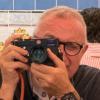Advice - Q2 vs SL2S
-
Recently Browsing 0 members
- No registered users viewing this page.
-
Similar Content
-
- 235 replies
- 20,363 views
-
- 31 replies
- 1,967 views
-
- 5 replies
- 444 views
-
- 14 replies
- 875 views
-
- 123 replies
- 9,852 views
-



Recommended Posts
Join the conversation
You can post now and register later. If you have an account, sign in now to post with your account.
Note: Your post will require moderator approval before it will be visible.